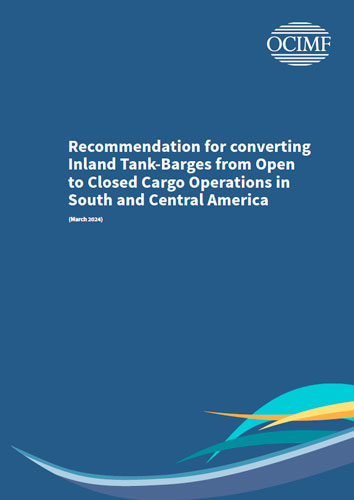Recommendation for converting Inland Tank-Barges from Open to Closed Cargo Operations in South and Central America/Рекомендация по переводу внутренних грузовых судов-цистерн с открытых на закрытые перевозки в Южной и Центральной Америке
Книга на английском языке
This information paper gives technical guidance to regional barge companies in South and Central America (SCA) on how to build or convert their inland barges for loading and unloading operations under closed conditions, to conform to international standards and industry guidance. OCIMF publications and industry good practice form the basis of this guidance, which addresses the procedures and equipment needed to comply with this safety precaution during operations at terminals or between two barges.
Open conditions are those in which ballasting, loading or discharging operations are carried out with ullage and sighting ports open. In the SCA region, around 70% of barges inspected under OCIMF’s BIRE inspection programmes are currently only equipped to operate under open loading conditions, potentially exposing personnel working on or near the tank-barge to vapours associated with the cargo. Open loading also raises the risk of fire or explosion during port calls when exiting tank vapours mix with the surrounding air, increasing the risk of developing a combustible atmosphere. Entering the flammable range, the vapours can ignite when exposed to an ignition source. This becomes a dangerous situation if equipment in the area is not properly grounded and maintained to ensure intrinsic safety.
Contents
Glossary
Abbreviations
Bibliography
1 Introduction
1.1 Barriers to converting to closed loading operations
2 Closed operations
3 Applying closed loading conditions onboard inland tankers
4 Risks from inadequate conversion
5 Training
7 Class involvement and certification
8 Other issues for consideration
Appendix A: Examples of equipment for use in closed loading operations




